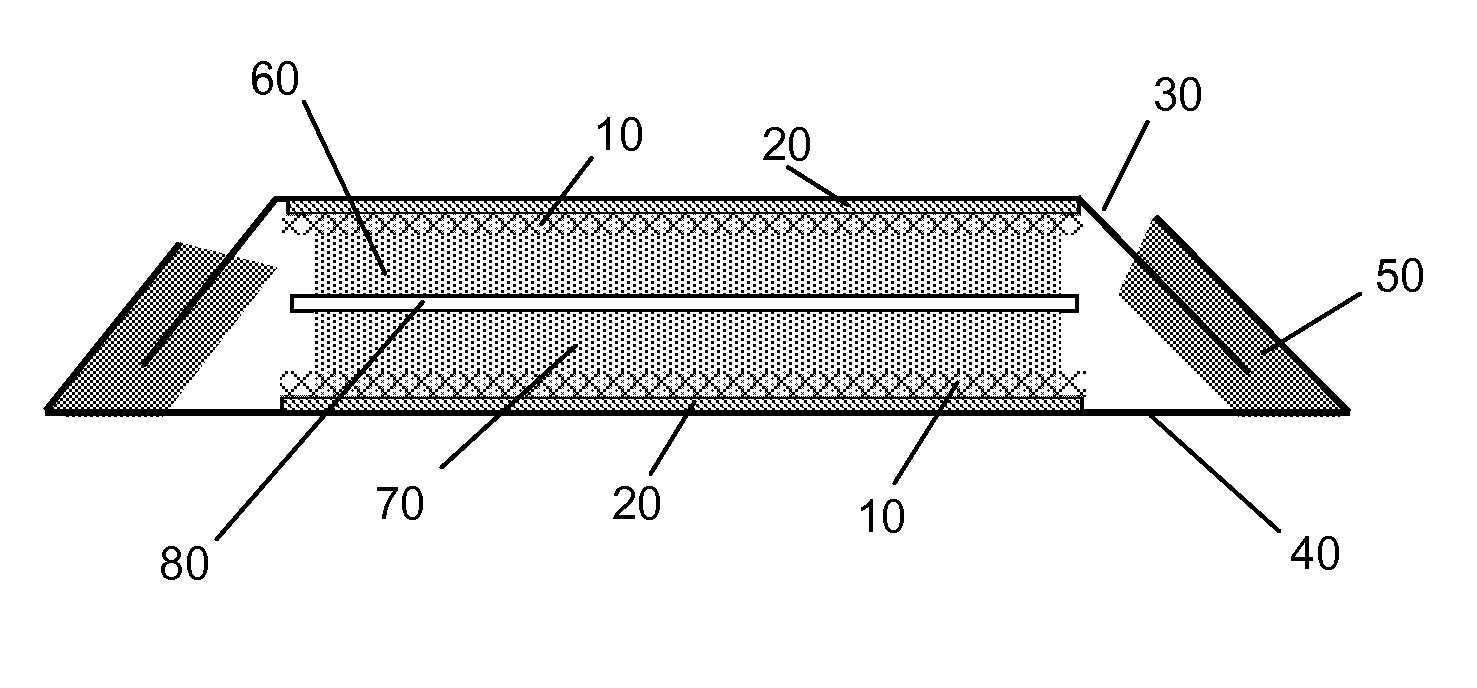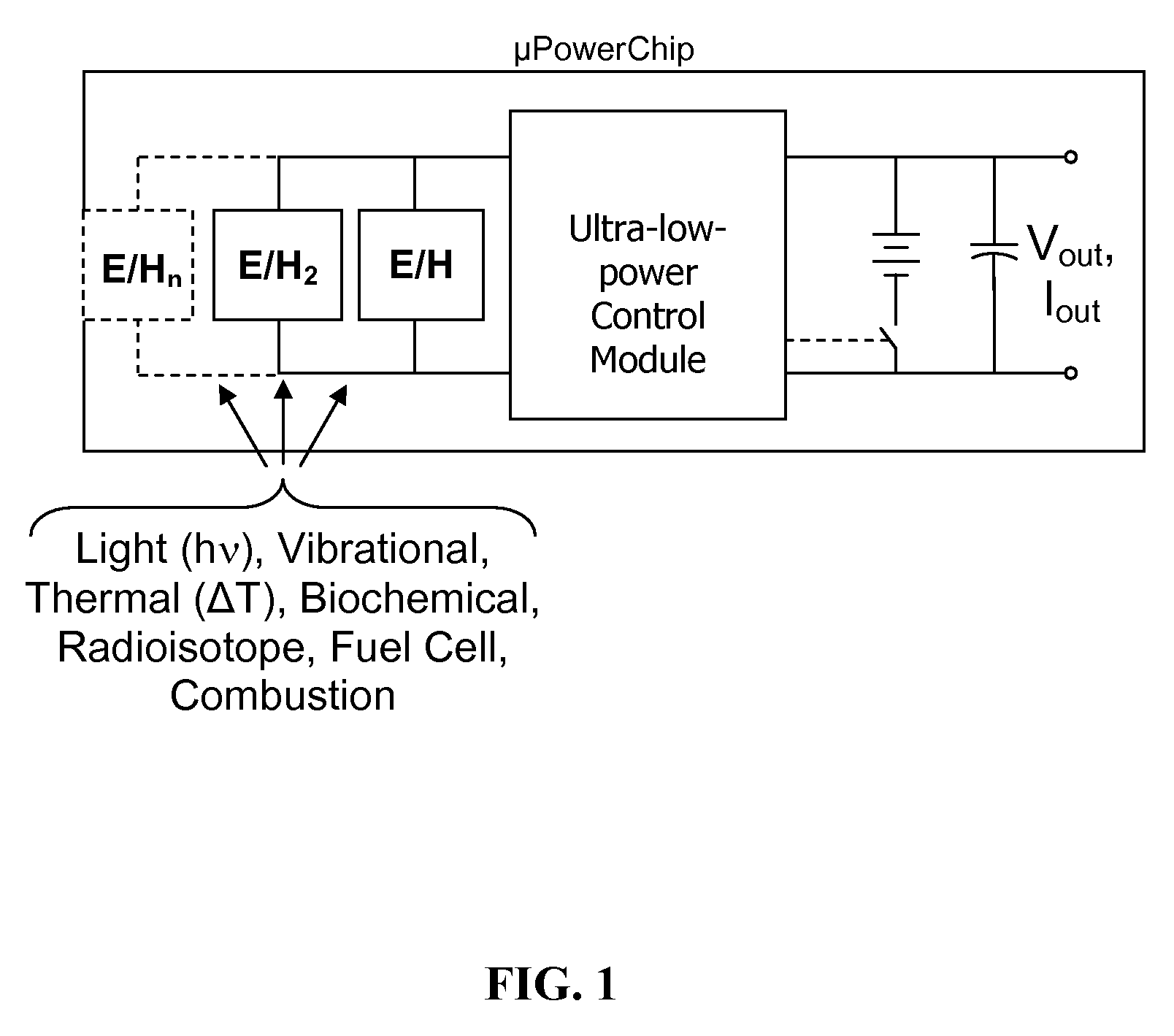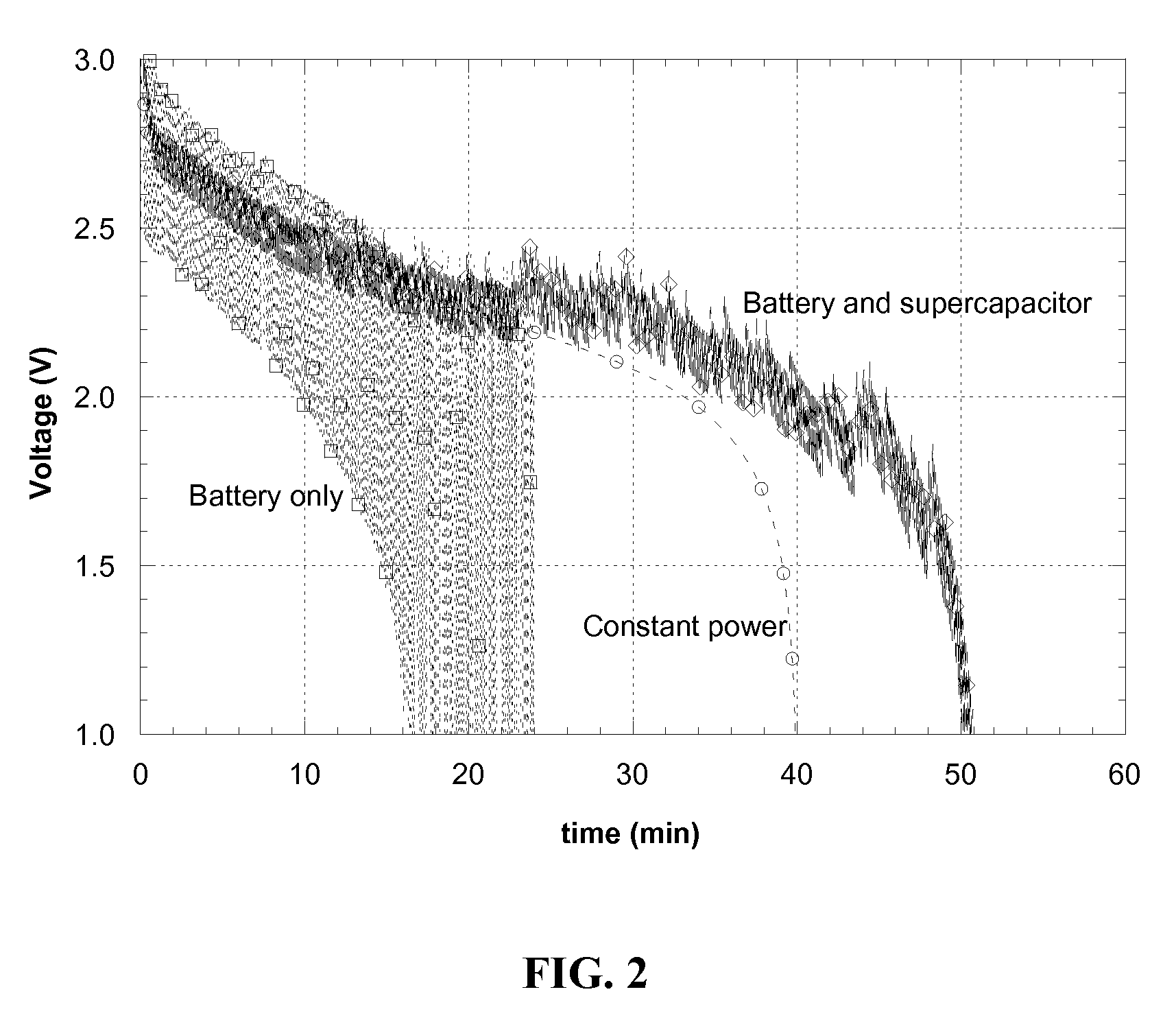Capacitors with low equivalent series resistance
a technology of equivalent series resistance and capacitor, which is applied in the direction of liquid electrolytic capacitor, electric generator, transportation and packaging, etc., can solve the problems of increased operating costs, inability to perform maintenance, and inherently limited systems, so as to achieve high equivalent series resistance, high energy density, and the effect of high equivalent series resistan
- Summary
- Abstract
- Description
- Claims
- Application Information
AI Technical Summary
Benefits of technology
Problems solved by technology
Method used
Image
Examples
examples
[0080]Several experiments were carried out using different thicknesses of 10.3 mm diameter commercial electrode materials (W. L. Gore & Associates, Elkton, Md.) electrodes in aluminum plated 2016 coin cells (Table 2), without the use of mesh. The coin cell parts comprised 316 stainless steel (SS), which is not electrochemically compatible with acetonitrile (AN) based electrolytes, and so were coated with a pinhole-free film Al (˜10 μm). (Propylene carbonate (PC) was also used as a solvent for some electrolytes.) The Al coating protected the SS current collector from the AN-based electrolytes. The effectiveness of the Al coating was demonstrated by determining that ESR values of Al-coated CC supercapacitors using an AN-based electrolyte were unchanged after several thousand cycles, while un-coated SS coin cell parts could not withstand a single cycle without corrosion of the current collector. These experiments indicate that varying electrode thickness had little influence on ESR red...
PUM
| Property | Measurement | Unit |
|---|---|---|
| temperature | aaaaa | aaaaa |
| capacitance | aaaaa | aaaaa |
| power | aaaaa | aaaaa |
Abstract
Description
Claims
Application Information
 Login to View More
Login to View More - R&D
- Intellectual Property
- Life Sciences
- Materials
- Tech Scout
- Unparalleled Data Quality
- Higher Quality Content
- 60% Fewer Hallucinations
Browse by: Latest US Patents, China's latest patents, Technical Efficacy Thesaurus, Application Domain, Technology Topic, Popular Technical Reports.
© 2025 PatSnap. All rights reserved.Legal|Privacy policy|Modern Slavery Act Transparency Statement|Sitemap|About US| Contact US: help@patsnap.com



